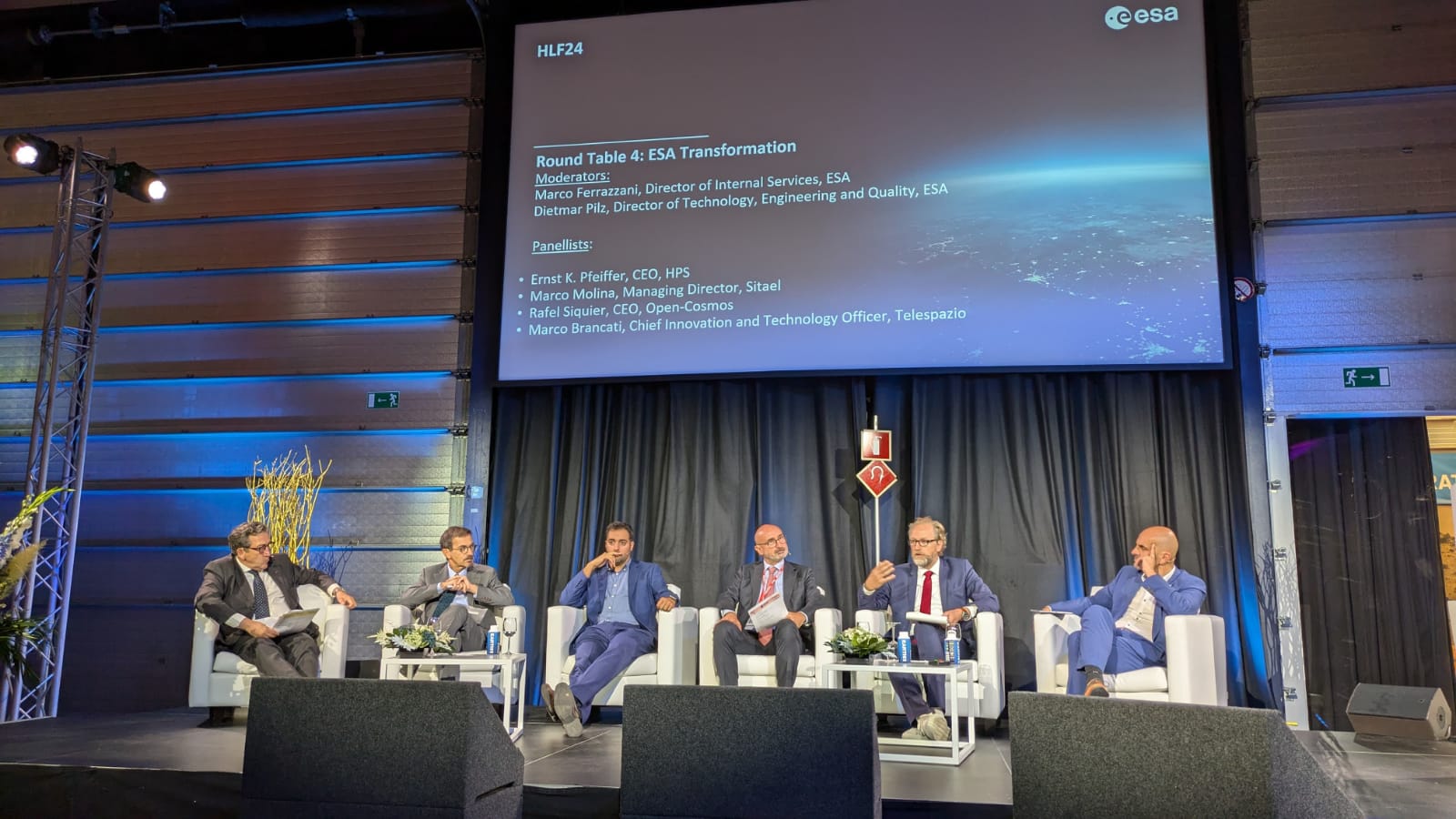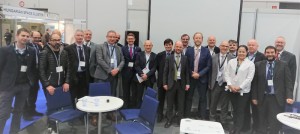Dezember 2024
HPS Christmas Party 2024: Our Biggest Yet!
Last night, we celebrated the holidays together at our annual Christmas party – and this year was extra special!
For the first time, we hosted it on our new floor, making it the biggest Christmas party in HPS history!
The evening was filled with:
- Plenty of mulled wine and delicious food
- A variety of drinks to toast the season
- 12 inspiring mini-presentations (just 2-5 minutes each) by our Department Heads, CEO, CFO, CTO, Quality Management, HR, Procurement and Social Media, sharing insights and ideas.
It was a wonderful evening of connection, celebration, and looking ahead to an exciting future. Here’s to the amazing HPS team and the bright year ahead!
November 2024
German space agency chief Dr. Walther Pelzer and DLR delegation focus on visit to HPS Group
During the traditional DLR delegation round on the opening day of the Space Tech Expo in Bremen, the head of the German Space Agency at DLR, Dr. Walther Pelzer, focused his attention on SMEs in the German space industry. Special attention was paid to the innovation forge HPS. And it was represented in groups: with HPS Germany (Munich), HPS Romania (Bucharest) and the joint venture company HPtex (Münchberg, Germany).
With reference to pioneering antenna projects such as HERA and EUCLID, company boss Ernst K. Pfeiffer emphasized the leading position Germany has gained in special antennas for space missions. HPS is also positioning itself as a leader in the commercial sector with the successful ADEO braking sail project, which ensures compliance with the new 5-year rule for satellite deorbiting and thus keeps the satellites ready for launch.
In his role as spokesman for German space SMEs, Ernst Pfeiffer also took this opportunity to emphasize the enormous importance of the DLR and ESA’s capability-enhancing technology programmes for SMEs as the innovation backbone of the industry. According to Pfeiffer, the precise promotion of the technological capabilities of SMEs via dedicated competition areas reserved for SMEs is irreplaceable.
Live demonstrations, e.g. of a functional model of the ADEO brake sail or a scaled model of a deployable large antenna reflector, supplemented by product demonstrations from HPS-Romania (e.g. radiator) and from HPtex’s MESH production (e.g. Ka-band mesh sample for use in the Copernicus mission CIMR) rounded off the visit program.
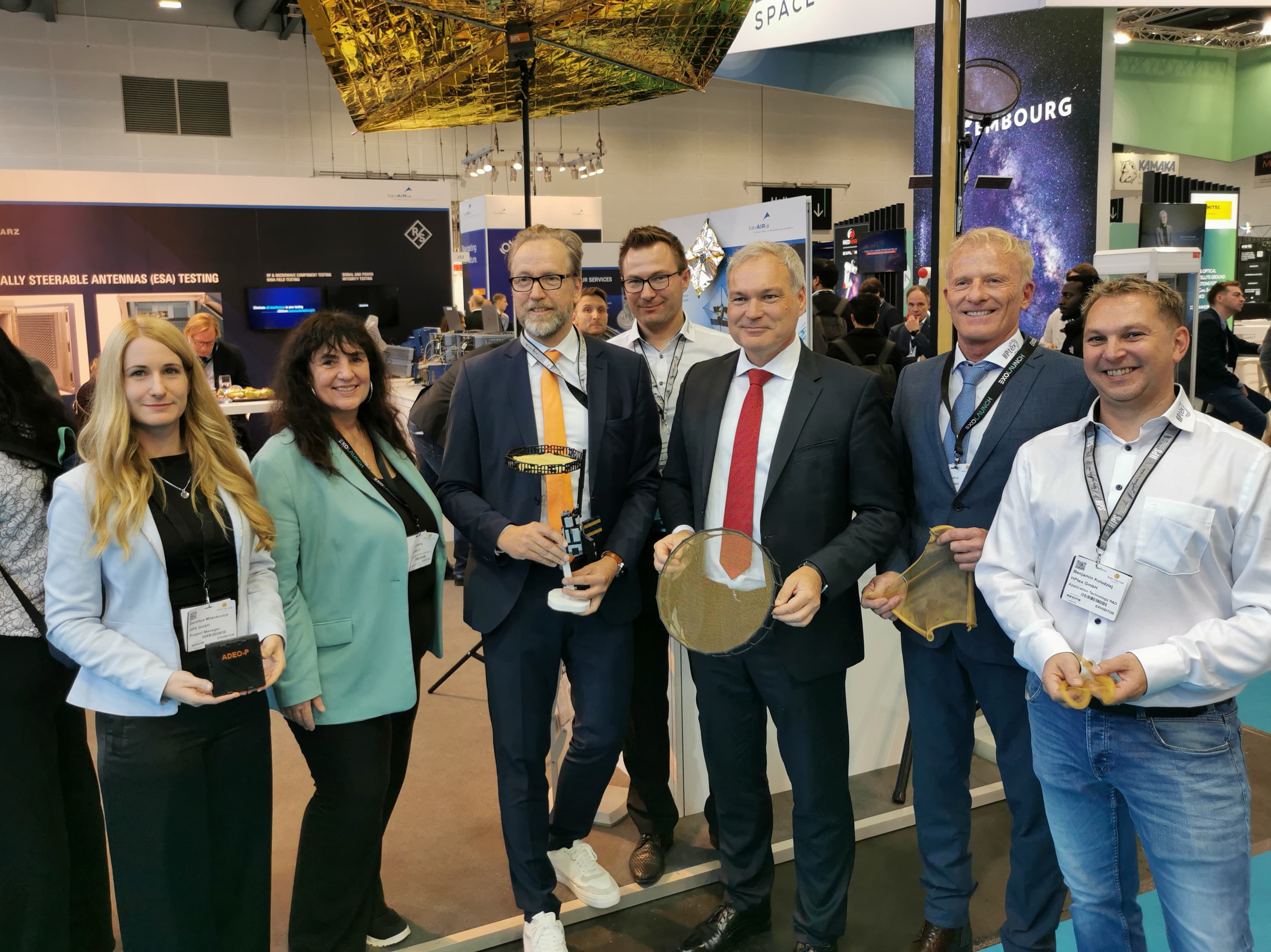
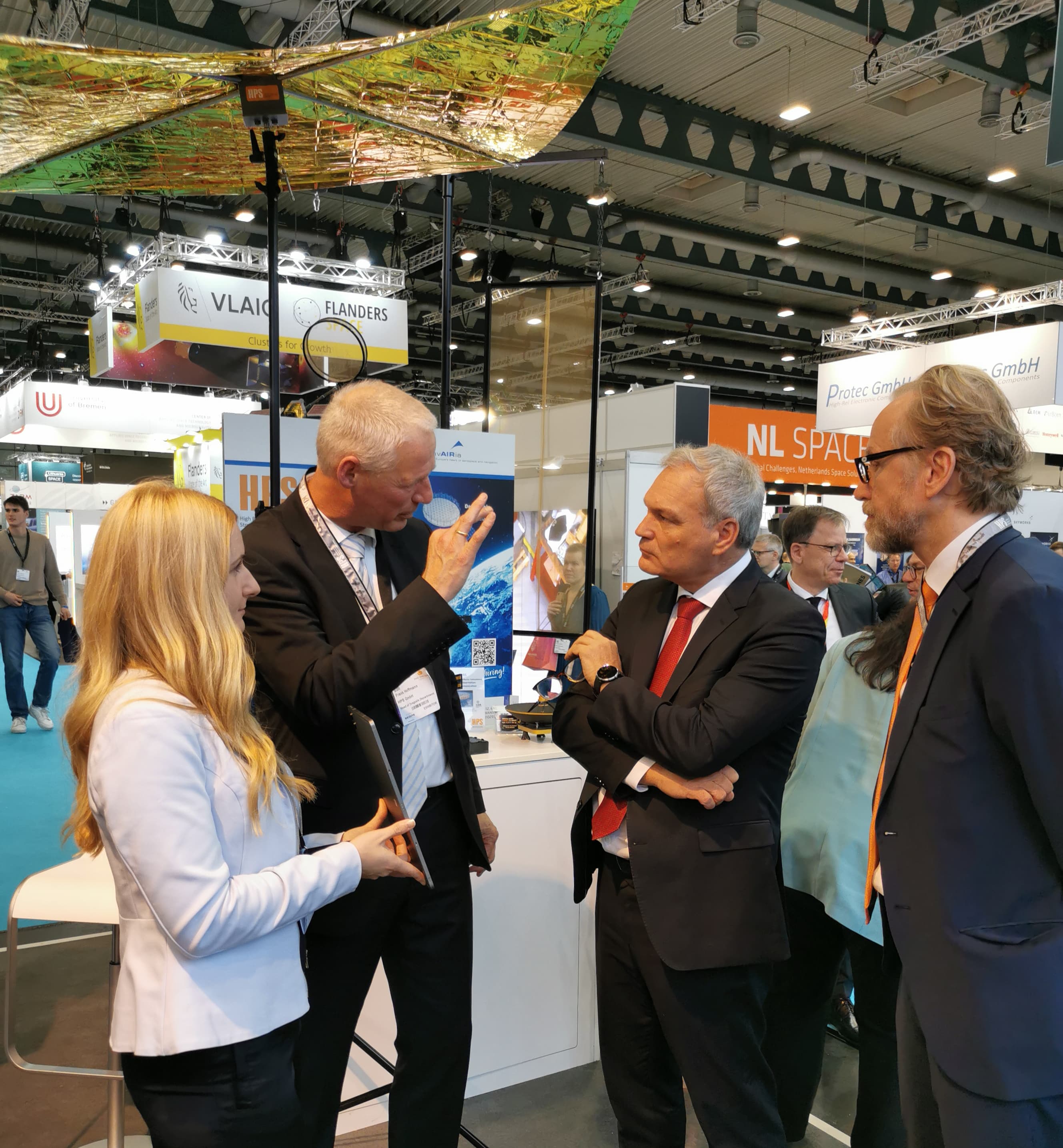
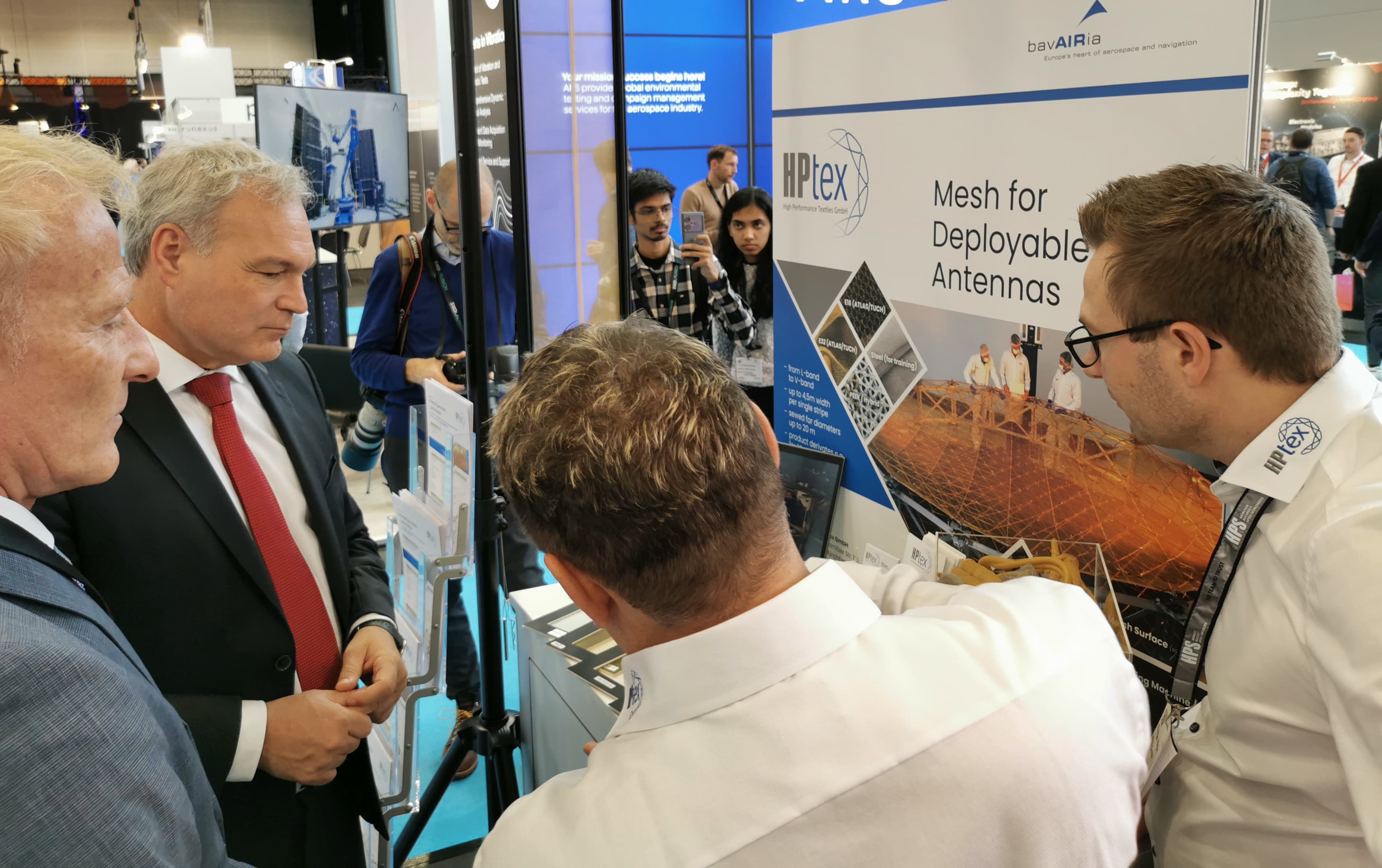
Oktober 2024
HPS Prominently Present at the IAC in Milano
Participating in the International Astronautical Congress, IAC, has developed into a good tradition at HPS over many years. This year, the company will be represented by Ernst K. Pfeiffer, CEO, together with ADEO project manager Mrs. Dorittya Milankowitch from HPS Munich and Horatiu Gheorghe as IAC-contact point for HPS Bucharest with products like secondary structures, thermal hardware and purging equipment. The HPS-team will keep up full presence during all five days of this international event.
Special highlights will be the company presentations; they are going to take place on Friday, 18th, from 10.15 to 10.45 a.m., and also as part of the Company Slam at the booth of the German association BDLI on Tuesday from 13.15 to 13.45 p.m..
Focus of both presentations will be on the product family of the ADEO deorbit sailsystem for automatic disposal of satellites after their end of mission, serving the idea of clean space, sustainability and debris avoidance even from the beginning of the satellite´s journey.
Main products besides ADEO to be asked at our booth: reflector antennas, deployable antennas, large deployable reflector subsystems, mesh, thermal hardware, purging equipment. HPS will warmly welcome there all its customers from both worlds: classic and NewSpace. For a dedicated prearranged business meeting please send a message to Contact@hps-gmbh.com.
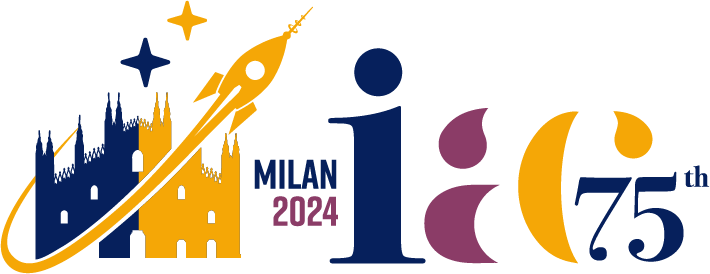
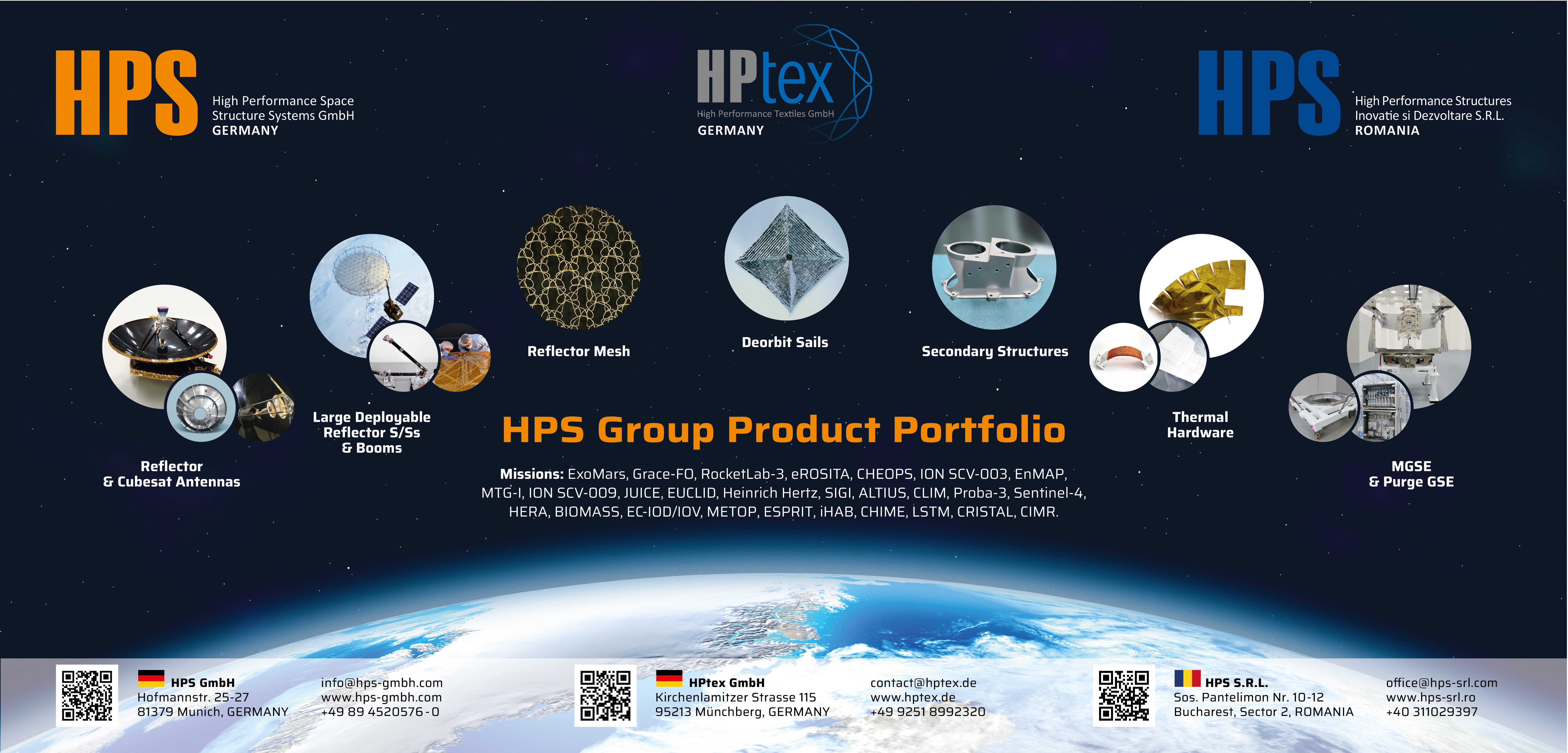
September 2024
Suggestions for ESA Transformation by CEO HPS – HLF 2024
Contribution by Ernst K. Pfeiffer: 7 Points Plan (CEO HPS GmbH and Speaker AKRK German SME). This paper has been created AFTER the HLF-event, taking the handwritten notes prepared BEFORE the event.
Noordwijk, ESA/ESTEC | 10. September 2024
September 2024
DLR’s national SatKom – a reflection of the steady development of HPS into the high-tech forge of the German space industry
It will take place again on September 3 and 4: The national conference “Satellite Communications Conference in Germany”. This is already the eighth event of its kind and reason enough to speak of a successfully established tradition.
In Bonn, leading representatives from industry, research and public clients will discuss satellite communications as an incubator for the information society of tomorrow.
From its premiere in 2008 until today, Munich-based space technology company HPS has remained loyal to the event as an exhibitor and panelist. What began with a modest presentation on “mechanical components for telecommunication” has developed into a central technology showcase for the German medium-sized company, which is now a “gold sponsor” of the event. Among other things, HPS now produces entire antenna subsystems for the most demanding missions and applications. Iconic highlights of German space-tech such as Heinrich Hertz and EUCLID provide impressive proof of the excellence of customized reflector antennas and high-end reflectors on a daily basis.
With HERA, whose complete antenna comes from HPS, will be another contender for the history books of space in October. Reliability and technical excellence – these are the characteristics on which the company builds. This claim is also reflected in the main exhibits on the 12 square meters of the HPS stand in the breadth of a whole range of original hardware:
- The KEAN backpack/manpack antenna for civil and military purposes
- The EQM model of the H2Sat reflector
- Brackets made entirely from 3D printing for star sensors, antenna feeds and also for modules of the world’s leading braking sail ADEO for the legally compliant rapid disposal of decommissioned satellites in accordance with the latest international rules for their launch approval
- Reflective mesh for deployable antennas
- The 30-centimeter X-band antenna, also printed in 3D.
While the 12 square meters of the exhibition stand are thus reaching their limits, the presentation of HPS’s capacities for the concrete development of further future technologies is only just beginning here; the focus is on
- Small antennas from 3D printing
- Large deployable reflector subsystems for telecommunications – both for civilian and military users, especially the German Armed Forces – technically comparable to the CIMR antenna for the European Union, developed and built under HPS consortium management
- Dual-band antennas, e.g. for the X and KA bands for downlink
- Multifrequency receiving antennas
- Metal Mesh for the global market, developed under the ESA’s ARTES program, also suitable for higher frequencies and already in use by highly renowned reference customers in North America and Asia.
At the booth, HPS CEO Ernst K. Pfeiffer, HPS department head Stefan Bedrich and project engineer Christopher Tapp will be available to contacts from large companies, the German Armed Forces and commercial customers from the NewSpace sector with functional demonstrations of the KEAN manpack antenna and of the ADEO brake sail for accelerated deorbit of decommissioned satellites, which deploys automatically at the end of the mission. In addition, Stefan Bedrich will report on the “Heinrich Hertz North Beam Antenna” and “End-to-end tests with the KEAN deployable backpack antenna” in the lecture program.

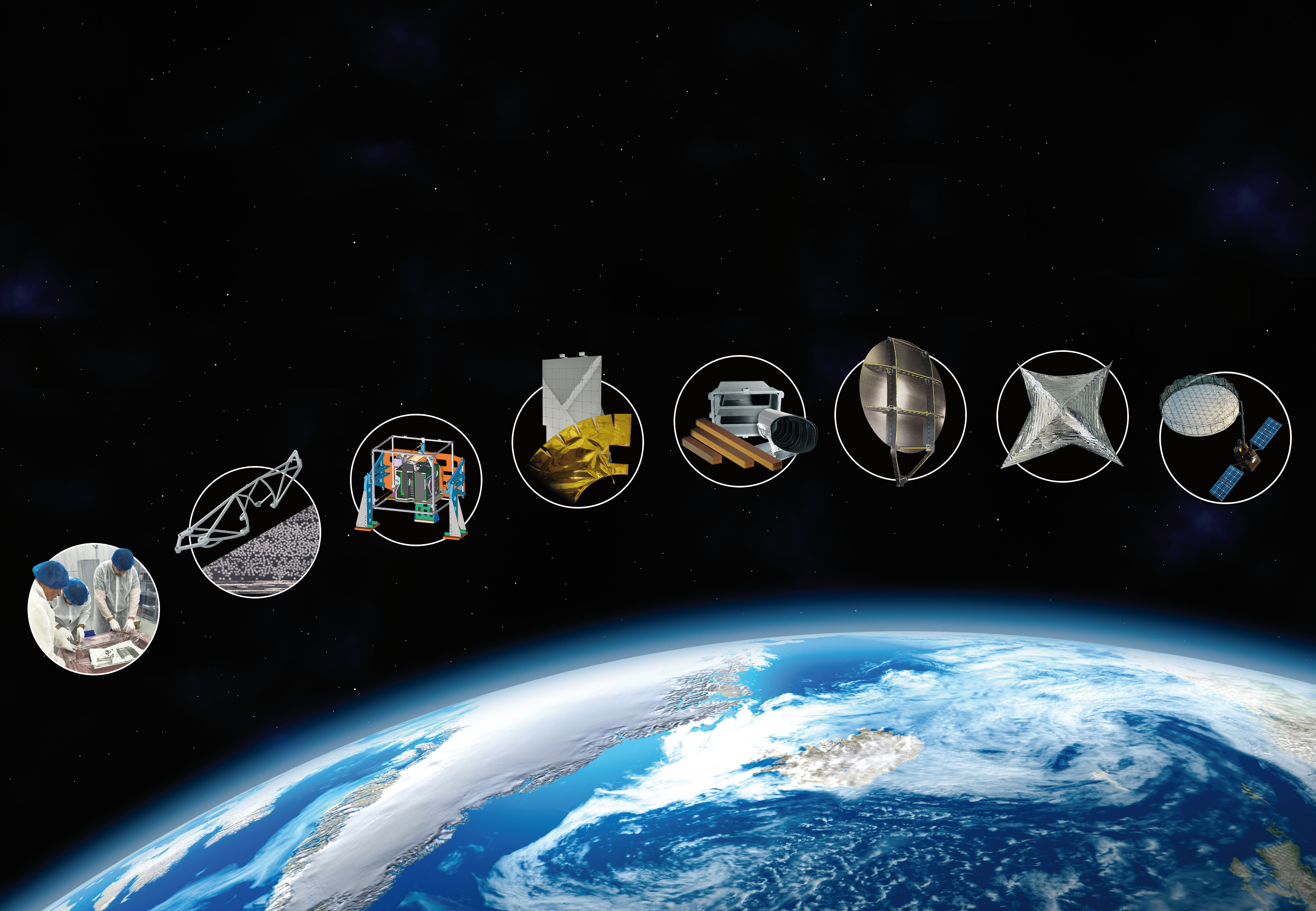
August 2024
On the way to the moon: HPS secures participation in the humanity project I-Hab with a German SME consortium
It is one of the most ambitious international space programs of our time: Artemis, the return to the moon to stay on this most distant outpost of mankind. At the ESA Ministerial Council Conference 2022, Germany subscribed to the European work package under the name GATEWAY with a contribution of twentyfive million euros and the expectation that SME consortia in particular would be given the opportunity to demonstrate their skills.
The Munich-based space technology company HPS, which had already qualified for the contract to provide the Antenna Reflector Assembly (ARA) as a core element of the ESPRIT LUNAR-LINK, now presented its SME consortium. On August 8, 2024, HPS Germany with its SME consortium of proven cooperation partners signed the multimillion Phase C/D contract with the mission prime TAS-Italy and took on the task of developing and manufacturing the so-called “Internal Secondary Structures”, i.e. lightweight panels, hinges and brackets, following Phase B2, which began in 2021 – in a nutshell: to provide the central elements that hold the interior of the habitable I-Hab together while it orbits the Earth’s satellite as a “bus stop moon” and represents the supply hub for all activities around and on the moon.
With great emphasis and intensive commitment, prime contractor TAS has created in the past weeks the conditions for HPS to be able to schedule the kick-off for all project-consortium under its leadership for August 13, based on the written contract in the middle of the summer; this applies in particular to Astrofeinwerktechnik (Berlin), HPS-Romania (Bucharest), INVENT GmbH, Braunschweig, Space Structures GmbH (Berlin), SpaceTech GmbH (Immenstaad). The security of having the right partner in HPS and its consortium for Europe’s part in this extremely demanding humanity project can also be drawn by the Group Prime from the success of an HPS consortium in other highly complex tasks such as the deployable giant antenna for TAS Rome as part of Copernicus CIMR.
In addition to a series of small and large technology projects, in which the company involves other SMEs whenever possible, HPS has now also assumed the role of central “SME enabler” in the supreme discipline of space technology for astronautical survival infrastructure and supply.
HPS CEO Ernst K. Pfeiffer reacted to this renewed vote of confidence with great enthusiasm: “I can say for HPS and all our subcontractors involved without exaggeration: this is a milestone for German SME-industry in the history of international space travel and for all of us more than just a piece of technology. We are creating something here that will go down in the history books of nations; in addition to all the challenges for the engineer, participation is an honor that we are all determined to earn. In keeping with the image of the Olympic Games having took place: this job is the gold medal with value for eternity. Countless videos and live broadcasts of astronautical activities using our technical facilities over many years will keep the memory of this achievement alive for generations.”
Delivery of the qualification models is scheduled for mid-2025, with the flight-assemblies to be delivered to TAS a year later. The launch is scheduled for 2028. Prior to this, there will be intensive discussions in the autumn on all ongoing processes and the “Delta Work” action area, which have been postponed for the time being in favor of the earliest possible start of the work.
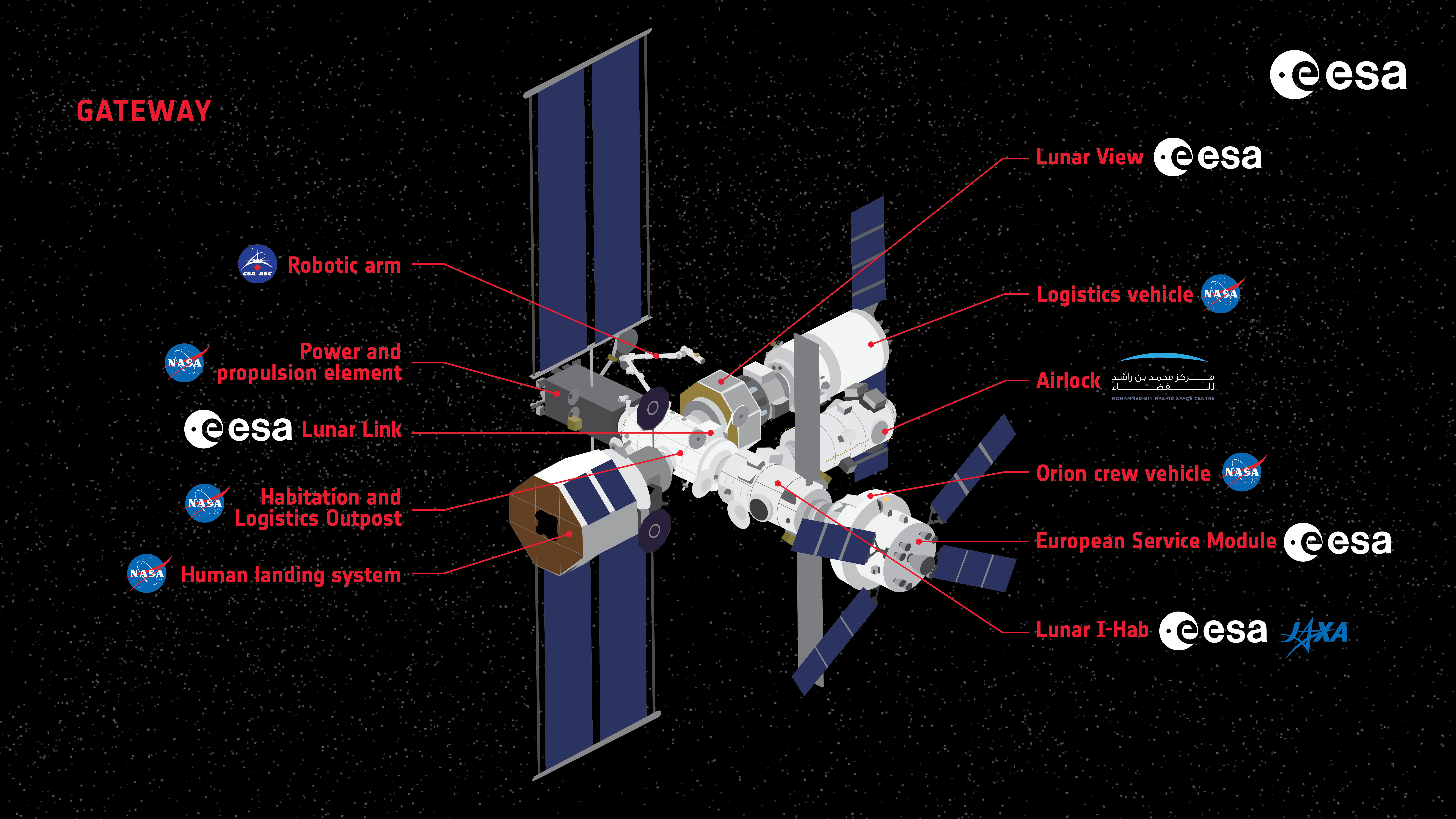
July 2024
Family & Friends Team Event at HPS Munich
HPS celebrates “Family & Friends”: July 10, 2024 is a special date – we celebrated with the entire HPS workforce and their families and all those many friends of our company according to the motto: Shared joy is double the joy.
Because we at HPS have many reasons to be happy: Since July 1, 2024, our HPS family has grown to a new record level with a total of 93 employees (including 11 freelancers and students) at the Bucharest (HPS Romania), Münchberg (HPtex) and Munich (HPS HQ) locations, and in Munich we have just expanded with a new, large floor in Hofmannstrasse as well as a large assembly area in the basement.
The circle of our friends from joint projects and association activities is huge, many from the Munich area came to visit us today, we were overwhelmed by the large number of surprise guests. Success is best celebrated with “Family & Friends”!
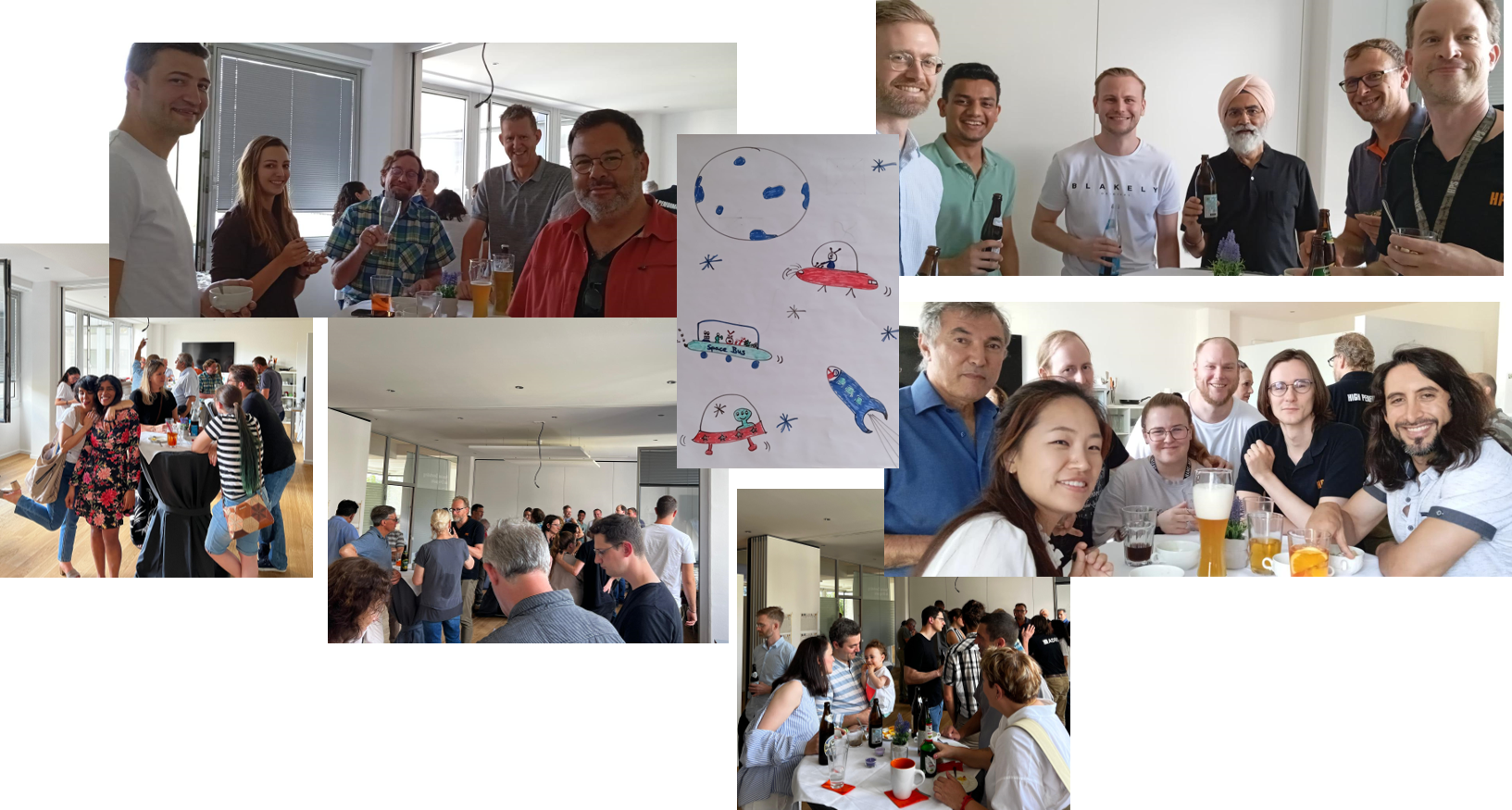
ESA pushing market-driven series production with co-financing of 1.2 million euros
July 2024
ADEO deorbit sail system from HPS
Space-related technologies should be clean and sustainable, because only then access to space will remain possible for future generations. This topic, which is currently a top priority of space policy, has led to a number of technical solutions which are now available on the market, with the ADEO deorbit system from HPS leading the way. Being recognized even by NASA, the ADEO dragsails ensure already before launch that satellites will not turn into space debris at the „end-of-business“. Instead, they re-enter the Earth’s atmosphere.
The European Space Agency ESA, as well as its national counterpart DLR and the Bavarian Ministry of Economic Affairs, has consistently supported the twelve years of development of this product by HPS. The sharp increase in demand from customers, particularly in the CubeSat and SmallSat sector from Europe, but also from North America and even Asia, is driven by the simple fact that both ESA, for European launches, and the FCC, for American launches, now demand on-board systems to be able to deorbit a satellite in just 5 years instead of the previous 25 years. Also SpaceX confirms that no more satellites will be launched without complying to this requirement.
With the ADEO variants “Pico”, “Cube”, “Nano”, “Medium” and “Large”, HPS meets the market demand for all sizes of LEO satellites in orbits between 300 and 900 kilometers. All variants are already in production, with manufacturing at the HPS production sites in Munich (Germany) and Bucharest (Romania) which are closely working together. Nevertheless, HPS and the technical ADEO experts at ESA have identified a number of optimization and expansion opportunities in order to urgently increase the pace of the series production and in response to the increasing price pressure of the New Space scene. The company is now raising the required funds for the implementation of these opportunities in the short term, using co-financing of 1.2 million euros signed by ESA on June 28, 2024.
ESA-Director Dietmar Pilz for Technology, Engineering and Quality in a videocon on July 1st: „my best wishes for this important technology development.“
HPS CEO Ernst K. Pfeiffer: “As a company, we are very pleased about the trust and continuous support from the European Space Agency, and therefore indirectly also from the German Ministry of Economic Affairs. However, this is at least as much a reason for joy for all those who, thanks to its technology programs such as GSTP, would like to see Europe in a leading role in the development of components for space technology and -transport, especially in the commercially so important LEO and MEO supplier market.
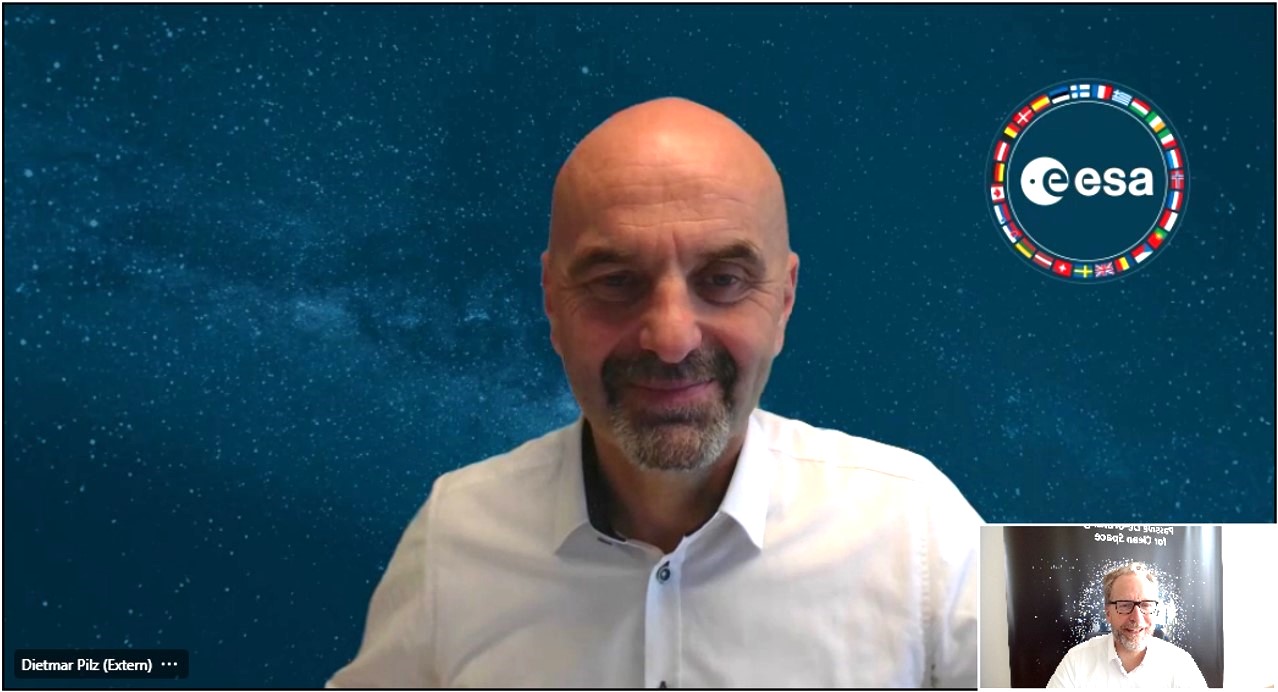
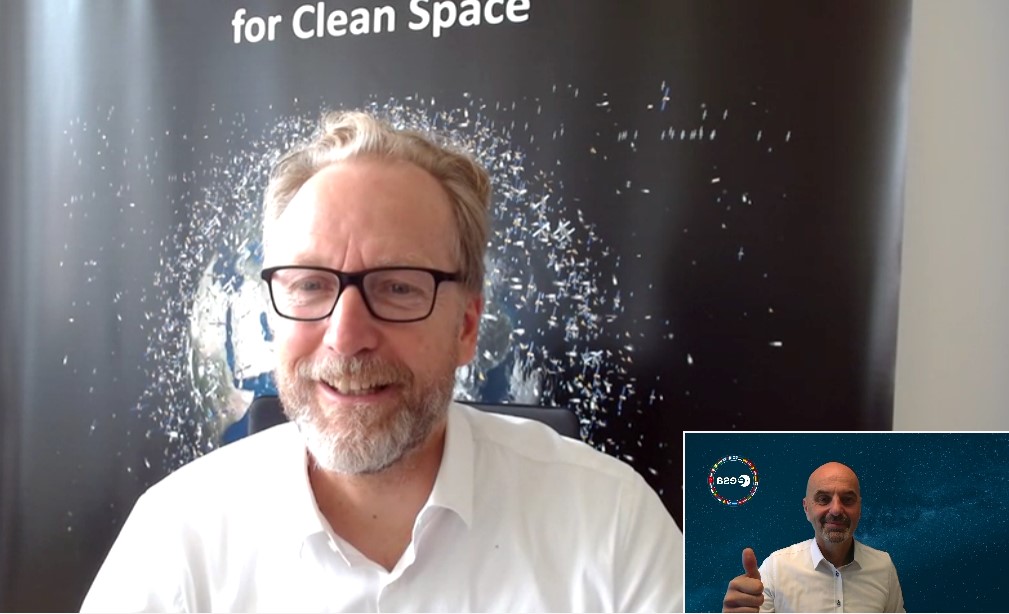
ESA’s priorities here are not only clear, but are also being consistently implemented. One milestone was the recent signing of the Zero Debris Charter in Berlin. The upcoming optimization of series production and the enhancement of our ADEO product portfolio, while maintaining the same level of quality and reliability, will effectively help to face the upcoming peaks in global orders, including those received very late, and thus still enable the launch of these satellites. We shareholders see our own funds, in the 7-digit range over the years, on the one hand as an investment in a strong future for HPS, and on the other hand as our moral obligation to make a contribution to the sustainable use of space.”
June 2016
Interview HPS-SpaceNews mit Dr. Ernst Pfeiffer, CEO von HPS und Sprecher der deutschen Raumfahrt-KMU im AKRK
Space-News:
In den letzten Wochen und Monaten haben Sie als Sprecher der deutschen Raumfahrt-KMU einen Marathon der Veranstaltungen in Vorbereitung der ESA-Ministerratskonferenz absolviert. Kam diese plötzliche Berücksichtigung der Raumfahrt-KMU durch die Institutionen für Sie überraschend?
Pfeiffer:
Keineswegs. Zum einen haben wir in den vergangenen Jahren sehr stark drauf hingearbeitet, dass unser AKRK-Zusammenschluss der rund 40 von insgesamt 90 Raumfahrt-KMU mit ca. 1500 von insgesamt 2500 Beschäftigten in Deutschland endlich als einziger unabhängiger Ansprechpartner des Mittelstandes zur Kenntnis genommen wird. Und sicher hat auch unsere kumulierte Darstellung von Kompetenz, Wirtschafts- und Innovationskraft in der kürzlich vorgestellten Website „Best-of-Space.de“ dazu beigetragen. Wir sind in der Tat auf Augenhöhe mit den Großen der Branche von ESA und deutschem Wirtschaftsministerium berücksichtigt worden. Das galt zwar schon zum High Level Forum der ESA im Juni letzten Jahres, startete aber dieses Jahr intensiv mit einem Vortrag über das Technologieprogramm vor den ESA-Delegierten am 9. Mai, ging über ein Top Level Gespräch über die ESA Strategie zwischen ca. 10 CEOs der europäischen Raumfahrtfirmen und ESA-Generaldirektor Herrn Wörner mit allen seinen Direktoratschefs am 12. Mai, weiter zur Panelveranstaltung „New Space“ am 2. Juni auf den Space Days der ILA in Berlin und schließlich zum diesjährigen High Level Forum der ESA am 20. Juni auf dem ich im Panel über „Next Steps for ESA“ eingeladen bin.
Space-News:
Alle reden von „new space“ ….
Pfeiffer:
Genau, alle reden über „new space“ – und meinen in Ermangelung eines europäischen Weges den amerikanischen, der da lautet: „machen, was finanzkräftige Quellen haben wollen“ und „mit privatem Risiko finanzieren, und wenn es schief geht werde ich auch nicht arm woran man selber glaubt“
„Masse über Klasse stellen und dabei Qualitätsverluste in Kauf nehmen, solange sie sich zumindest kurzfristig rechnen“.
Space-News:
Ist das auch der europäische Weg?
Pfeiffer:
Niemand in Europa wird das unterschreiben. Zum einen, weil es diese finanzkräftigen Unternehmen in D und EU nicht gibt, ebenso wenig wie die Risikofinanzierer und schon gar nicht die Mentalität, nicht nachhaltiges Billiges zu bauen, dabei Qualität zu opfern und Folgekosten (Schrott etc) für kommende Generationen ohne Ansicht der Dimension in Kauf zu nehmen.
Abgesehen davon, ist es ein gewaltiges Risiko, sich darauf zu verlassen, dass schon genügend reiche Unternehmen aus den USA auf Ideen kommen, wie sie denn durchgehend die Raumfahrtindustrie in Europa beschäftigt halten können.
Space-News:
New Space in diesem amerikanischen Sinne ist also weder europäisch, noch ist es geeignet, gerade KMU eine Perspektive zu geben?
Pfeiffer:
New Space europäischer Machart wäre das Ergebnis auch europäischen Vorgehens und Denkens. Und da haben wir eine Menge aufzuweisen. Wir machen nicht einfach mal eben so etwas, weil es vielleicht hier oder da kurzfristig Gewinn bringt – wir machen überhaupt nichts nur nach dem reinen Prinzip kurzfristigen ökonomischen Gewinns. Wir machen die Dinge in Europa so wie wir sie machen, weil für uns hier die Dinge immer einen viel tieferen Sinn und Nachhaltigkeit, als kurzfristig in Dollar messbar ergeben müssen. Ziel in Europa war es bisher, nicht nur eine Handvoll reicher Unternehmen noch reicher zu machen, sondern möglichst viele Unternehmen nachhaltig und langfristig zum Wohle einer unabhängigen, ausgeglichenen Gesellschaft zu erhalten. Derzeit besteht
Gefahr, dass dieses Gleichgewicht und die Unabhängigkeit in Europa kippt.
Space-News:
Wie drückt sich das aus?
Pfeiffer:
Lassen Sie mich ein Bild bemühen. Nach eben beschriebener amerikanischer Mentalität soll ein Produkt hinreichend funktionieren, nur Schäden für den unmittelbaren Nutzer müssen ausgeschlossen bleiben. Auch wir können uns sicher nicht alle der Faszination eines mächtigen V8 und dem Reiz vergleichsweise unendlichen Sitz- und Reisekomforts eines typischen US-Autos entziehen. Im Gegensatz zum Amerikaner nehmen wir es dann aber schon übel, wenn zugunsten eines schnelleren Verkauf garantierenden Preises dann unterwegs mal ein Knopf hier abfällt oder ein Schalter da nicht funktioniert. Und erst recht unakzeptabel ist für uns die Vorstellung von ressourcenvernichtenden Trinksitten und materialverschwendendem Design, was alles dann nur nachfolgenden Generationen Probleme macht. In Europa denken wir anders; Nachhaltigkeit hat für uns zwingend etwas mit Qualität zu tun. Darin sind wir gut, und darin sind wir besser als alle anderen – USA, Asien, Russland.
Space-News:
Was folgt daraus für „new space“ made in Europe?
Pfeiffer:
Wenn das so ist, sollten wir das auch zur Grundlage unseres „European way of new space“ machen. Nicht warten, bis irgendwer von irgendwo irgendeinen kommerziellen Auftrag platziert, sondern die Landschaft solcher Aufträge samt Staat, Auftraggebern, Programmen und Auftragnehmern selbst vorzeichnen.
Wenn wir als KMU politik- und öffentlichkeitswirksam dieses Feld der systematischen Suche nach vernünftigen, nachhaltigen und politisch wie wirtschaftlich höchst wünschenswerten „new space – Projekten made in Europe“ besetzen, besetzen wir damit gleich das ganze Feld „new space“ selbst und jegliche Diskussion darum. Wir stellen solide Weichen, statt blind Trittbrett zu fahren!
Space-News:
Kann das wirklich in Anbetracht der „unendlichen Möglichkeiten“ jenseits des Atlantiks funktionieren?
Pfeiffer:
Sicher kann es das, und ich bin darüber hinaus sicher, dass es seine Wirkung auf den „American way of new space“ auch nicht verfehlen wird. Nehmen Sie wieder das Bild vom Auto. Wie kommt es wohl, dass amerikanische wie auch japanische Hersteller in den letzten rund zwanzig Jahren vermehrt dazu übergehen, europäisches Design, und europäische Technik und Europäisches Umweltbewußtsein als Maßstab mitzunutzen? Das Bessere ist des Guten Feind, das wird auch bei „new space“ auf lange Sicht nicht anders sein.
Space-News:
Ist das Ihre Hauptbotschaft auf dem Marathon zur Ministerratskonferenz?
Pfeiffer:
Das und der dringende Hinweis, dass wir beim Hype um „new space“ unseren „old space“ nicht vergessen sollten, sprich: weiterhin Investition in Höchst-Technologie. Gerade wir Deutschen sind ja oftmals so eifrig dabei, neue Dinge – besonders, wenn sie aus den USA kommen – über das Bestehende zu stellen. Davor kann ich nur warnen. Bei aller Begeisterung für Neues – die liegt ja auch irgendwo in der menschlichen Natur – das zu vernachlässigen, was uns in der Raumfahrt groß gemacht hat, endet für uns im Desaster, in einer verlorenen Unabhängigkeit Deutschlands. Um abschließend noch mal den Autofahrer-Blick einzunehmen: Wenn wir mit unausgegorener Taktik, mangelnder Schnelligkeit und unzureichender (Finanz-) Kraft auf die linke Spur wechseln, um einer Chimäre nachzujagen, müssen wir uns nicht wundern, wenn uns traditionelle, staatsgetriebene Old-Space-Länder Europas und Asiens auf der Pannenspur technologisch überholen. Als Raumfahrt-KMU werden wir jedenfalls schön weiter hochinnovativ die technologische Mitte besetzen und von dort aus versuchen, flexibel mit neuen, kreativen Ideen von Anwender-KMU den „European Way of New Space“ zu leben.
Eine zweite Botschaft an die Ministerratskonferenz wäre noch: Nutzt die aktuelle Begeisterung für Raumfahrt in der Gesellschaft für Inspiration, europäischen Zusammenhalt, globale Zusammenarbeit und damit Friedenssicherung.
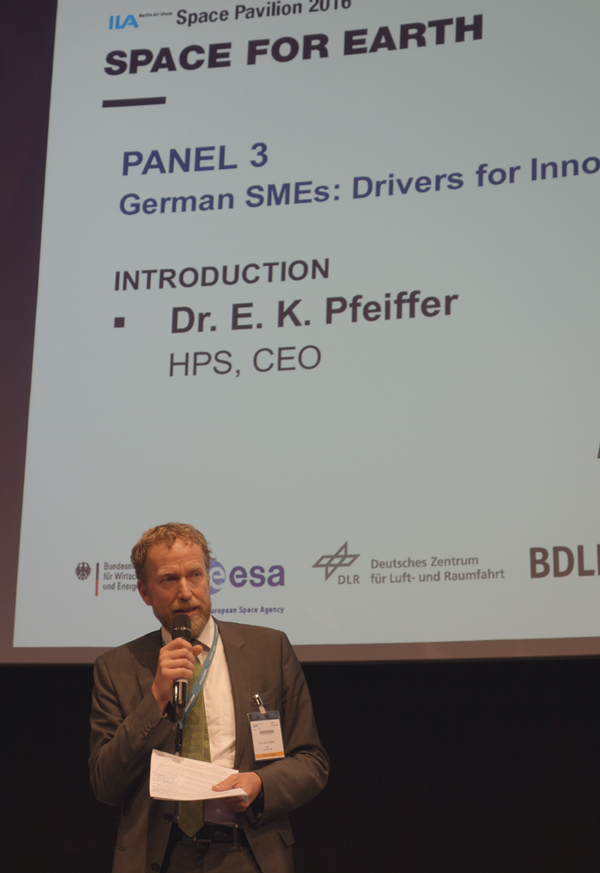
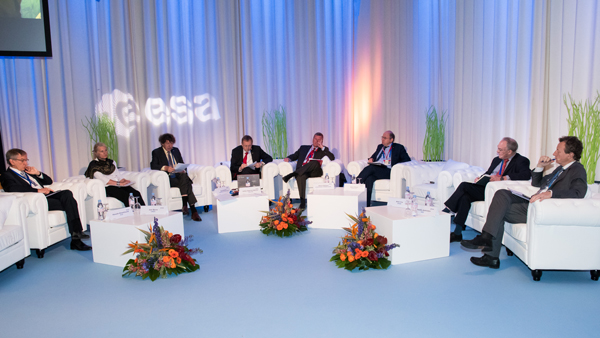
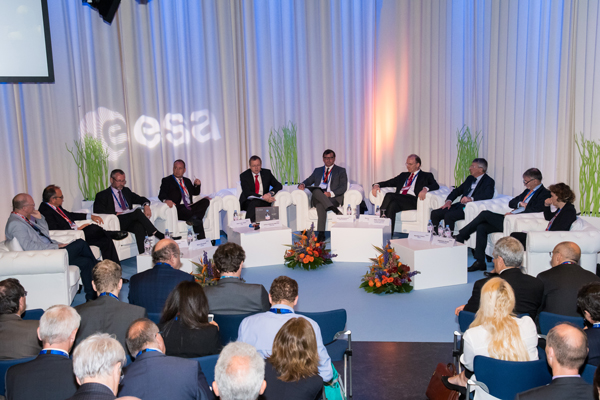
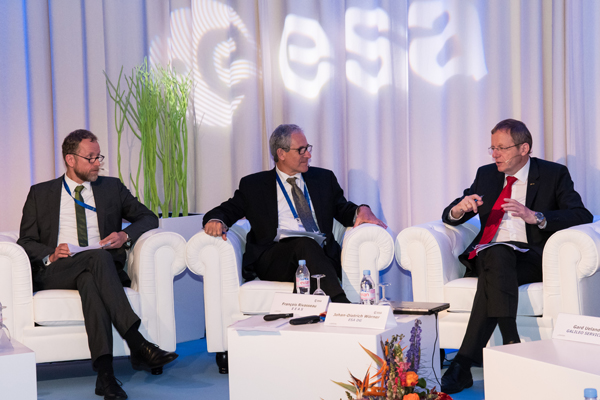
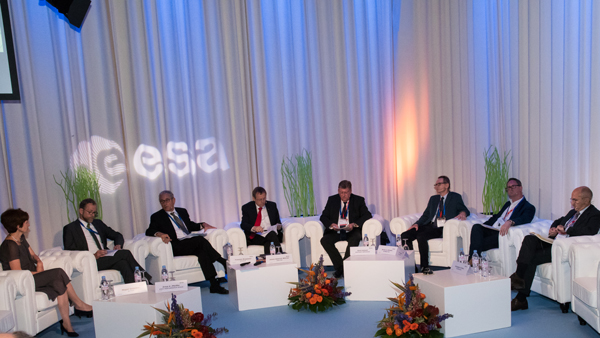
March 2017
Auf Einladung der Bundesfachkommission für Wachstum und Innovation des deutschen Wirtschaftsrates präsentierte HPS-Geschäftsführer DR.-Ing. Ernst Pfeiffer am 9. März 2017 in Berlin die notwendigen Ecksteine einer auf nationale und europäische „souveräne Partnerschaft“ im All gerichteten Wirtschaftspolitik aus Sicht der Raumfahrt-Zulieferer. Er betonte dabei die besondere Rolle der Fähigkeit zur Entwicklung eigenständiger kritischer Technologien und innovativer Lösungen auf Komponenten- und Subsystemlevel durch die deutschen KMU der Raumfahrt, deren Arbeitsgemeinschaft AKRK Pfeiffer als Sprecher gegenüber Politik, Agenturen und Öffentlichkeit vertritt.
In dem Zusammenhang belegte er auch klar den politisch-administrativen Handlungsbedarf zur Stärkung nicht nur der deutschen Raumfahrt-KMU-Basis sondern auch der gesamten deutschen Raumfahrt-Zulieferindustrie. Nach den Beschlüssen der ESA-Ministerratskonferenz im Dezember 2016 beträgt die deutsche Zeichnung der relevanten ESA-Technologieprogramme GSTP und ARTES lediglich 5 Prozent der deutschen Gesamtzeichnung.
Weitere Schwerpunkte der Veranstaltung galten dem Bericht aus Parlament und Fraktion durch den Vorsitzenden der parlamentarischen Gruppe Luft- und Raumfahrt, Klaus-Peter Willsch, MdB, der Frage nach einer europäischen Version von „New Space“ (Dr. Fritz Merkle, Vorstand OHB SE) und den jüngsten Startup-Plänen für die Rückkehr zum Mond (Robert Böhme, CEO von Part Time Scientists).
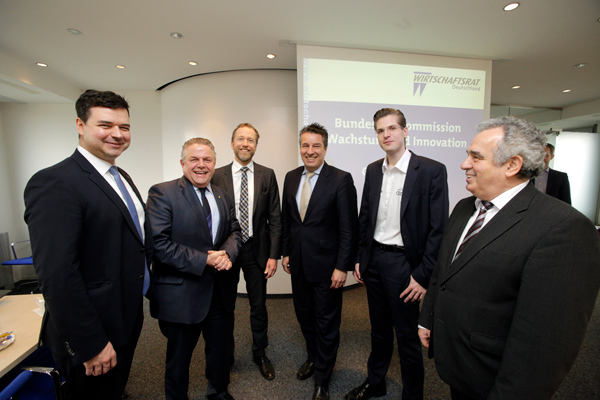
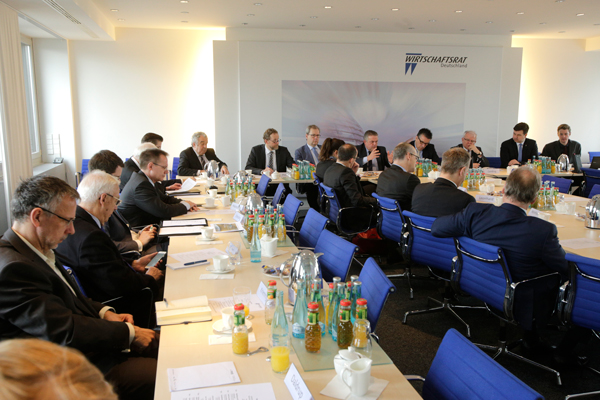
October 2018
At the occasion of the Public Day at the world´s largest space congress IAC this year in Bremen ESA invited the heads of space industry from Europe, America and South Adrica to discuss the crucial question that will probably dominate the ESA Ministerial Council in 2019: Which role and participation need SME to take in the value chain, and how can respective goals be reached?
ESA, represented by administration director Eric Morel de Westgaver, addressed specifically tendencies in new space formats towards vertical integration schemes of production under one roof. This stands in sharp contrast to all positions taken by ESA-procurement policies designed to strengthen the solid role of SME.
Dr. Ernst K. Pfeiffer, CEO of HPS GmbH and spokesman of the large central German SME association emphazised the importance of ESA´s latest moves towards strengthening the role of SME in the value chain and invited the CEOs of present LSI, like Nicolas Chamussy, Head of Space at Airbus Group, Marco Fuchs, CEO of OHB, and Lockheed-Vicepresident Lisa Callahan to direct discussions about the promotion of SME-roles in space production. A solid and balanced industrial space ecosystem, according to Pfeiffer, is not an end in itself. It is a fundamental pillar to strengthen competitiveness through flexibility, innovation power and speed also for the LSI. And, as for institutional customers, promoting SME means nothing but cultivating a maximum level of competitiveness in large space projects, since decisive competition takes place exactly and only on the level of SME.
Most participants agreed that also new space is not going to change that elemental condition. Quite the contrary: the stronger tendencies towards commercialization grow, the higher the need for a competitive and clearly identifiable SME-landscape in space. Promoting this is consequently one of the major policy lines of ESA-procurement and as such without any alternative.
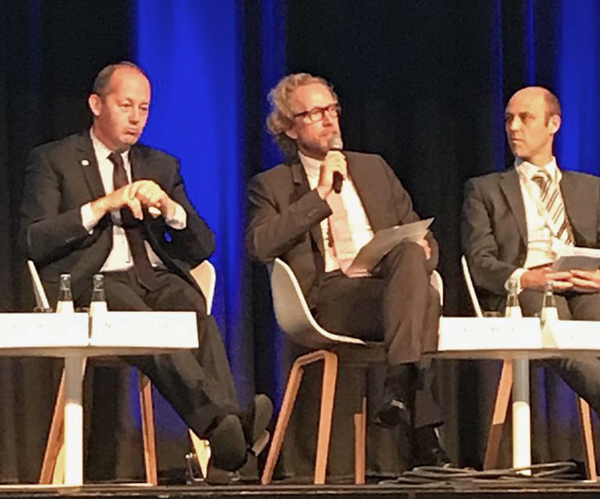
Second step taken towards European technological independence regarding large deployable reflectors
May 2019
HPS-consortium wins ESA´s LEOB challenge
The European consortium of 17 partners out of six European countries initiated and led by HPS GmbH has won the prestigious ESA contract for LEOB, the Large European Reflector for Earth Observation. The call had been initiated by ESA´s Earth Observation directorate in 2018.
The HPS consortium, including LSS Germany and RUAG Space Germany, won against severe competition from Italy, Spain, and the U.K.. Total budget amounts to 5 million €; taken together with contract number one on the development of a large deployable reflector out of late 2017, the budget to develop this critical technology now amounts to 12.5 million €. Future mission targets include geological changes, monitoring of vegetation, communications, Big Data, Internet of Things, and sciences.
Kick-off was on April 15th, 2019, the project will conclude with a tested Engineering Model exactly two years later in April 2021. It is the last precursor project before the development of a flight model for two future Copernicus missions: CIMR with a 7-8m reflector, operating in L- through Ka-band, rotating on top of the satellite at a speed of ten turns per minute, and ROSE-L with 12 meters of diameter, operating in L-band.
Precursing ESA-technology programs and LEA out of Horizon 2020 had laid the foundations for this great success.
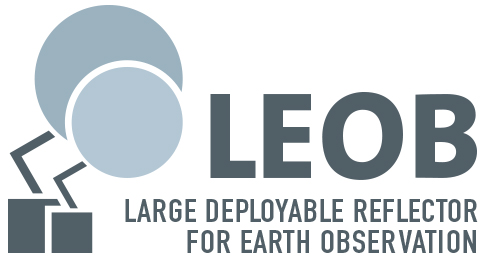
June 2019
Aus dem Tagebuch des Bundestagsabgeordneten Dr. Thomas Sattelberger (FDP)
Flug nach München. Gemeinsamer Termin mit meinem Parteifreund Wolfgang Heubisch MdL, Bayerischer Wissenschaftsminister a.D., heute Landtagsvizepräsident und forschungspolitischer Sprecher der FDP im Bayerischen Landtag.
Mit dabei Maria Herrmann, Büroleiterin meines Berliner Fraktionskollegen Mario Brandenburg. Wir besuchen Raumfahrtmacherinnen und -macher im Münchner Süden, die HPS GmbH. Für mich bereits der zweite Besuch.
Am 20. Juli vor 50 Jahren wurde John F. Kennedys Vision „We choose to go to the Moon” Wirklichkeit.
Dazu planen wir was. Was? Sage ich nicht. Könnte ja auch sein, dass wir ob der Berliner Arbeitslast vorher in die Knie gehen.
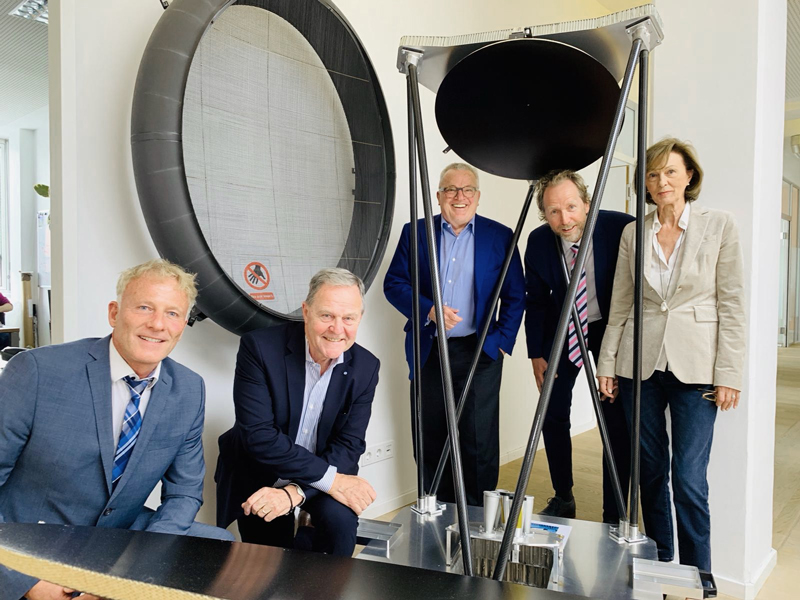
July 2019
Geschäftsführender Gesellschafter von HPS, Ernst K. Pfeiffer, Mitveranstalter von „What`s next in space“ im bayrischen Landtag
Inhalt der Veranstaltung war die Diskussion eines neuen Kurses für die deutsche Raumfahrt mit abschließender Präsentation von 7 Forderungen an die bayrische Landesregierung und die Bundesregierung.
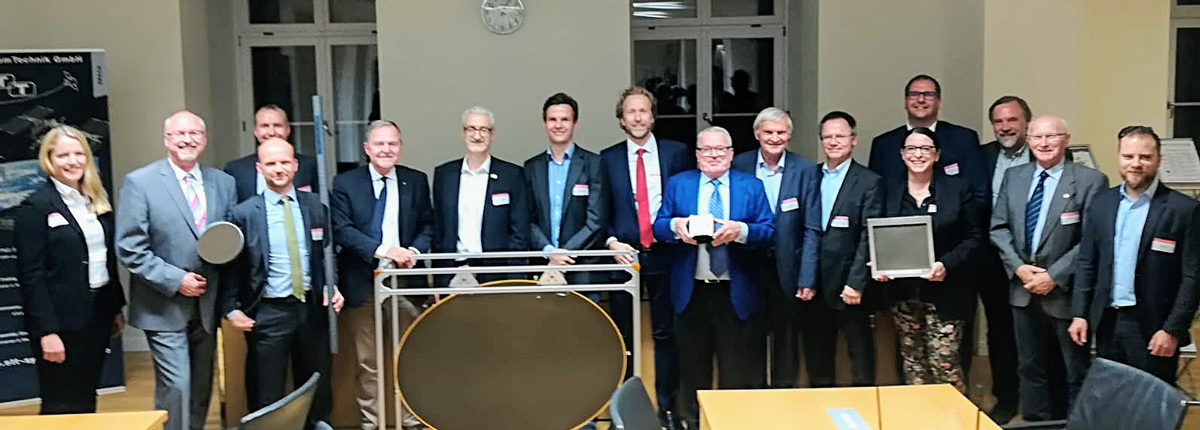
50 Jahre nach der Mondlandung: Wie sind Deutschland und Bayern aufgestellt bei der Zukunftstechnologie Raumfahrt? Wo liegen die größten Chancen? Wo besteht Handlungsbedarf? Wo muss die Politik mit Hand anlegen und unterstützen?
Veranstalter:
- h. c. Thomas Sattelberger MdB, Sprecher für Innovation, Bildung und Forschung der FDP-Bundestagsfraktion, Wahlkreis München-Süd
- Wolfgang Heubisch MdL, Vizepräsident des Bayrischen Landtags, Bayrischer Staatsminister a.D. für Wissenschaft, Forschung und Kunst
- Dr. Ernst Messerschmid, deutscher Physiker und Astronaut (1985)
- Ing. Ernst K. Pfeiffer, Vorsitzender des Verbands mittelständischer Raumfahrtunternehmen „Best of Space“
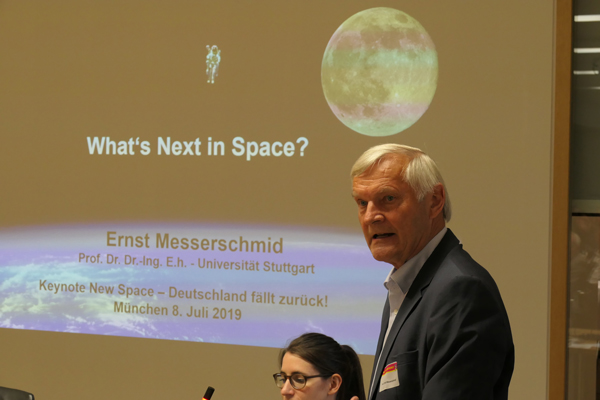
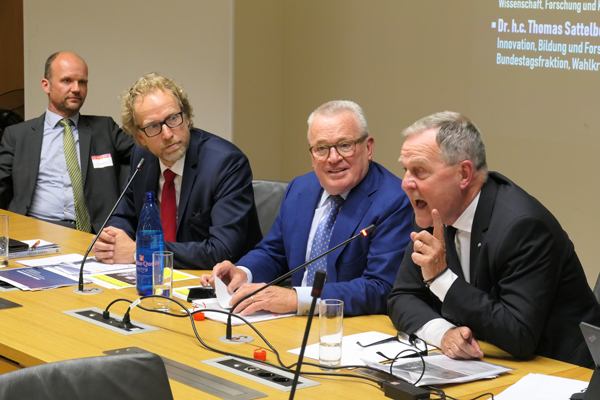
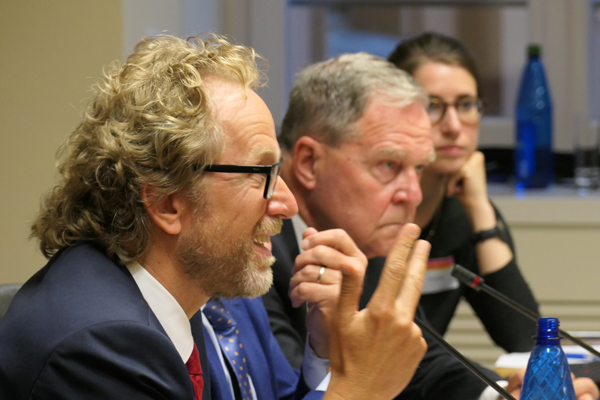
November 2019
Nach einem für die deutschen Raumfahrt-KMU erfolgreichen Jahr setzt ihr Verbund im Arbeitskreis Raumfahrt des DLR (AKRK) auf Kontinuität und bestätigt ihren Sprecher, Dr. Ernst K. Pfeiffer sowie den stellvertretenden Sprecher Dr. Kolja Nicklaus für eine weitere Wahlperiode im Amt. Hinzu kommt als zweiter stellvertretender Sprecher Herr Maik Hartmann von Astro und Feinwerktechnik.
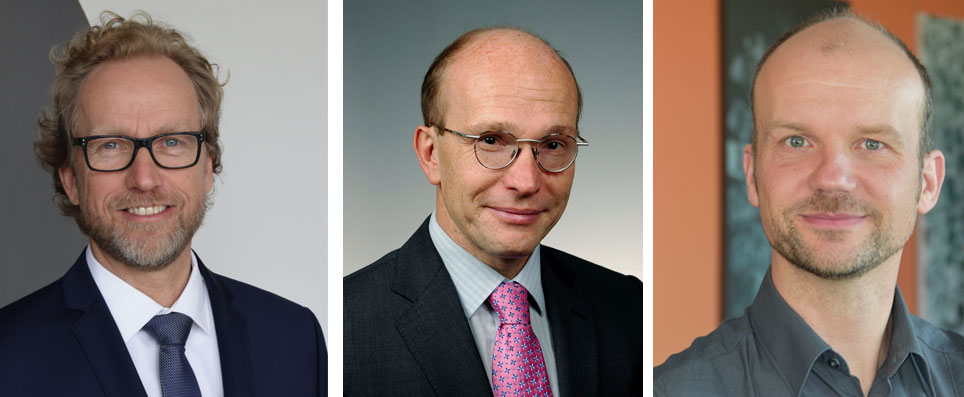
November 2019
KMU eine feste Größe auf Bremens SpaceTech Expo Europe
Sie ist drei Tage kurz, hat ihre Heimat im kleinsten Bundesland der Republik, benötigt nur rund zwei Hektar Ausstellungshallen, und doch ist die SpaceTech Expo Europe die größte, nämlich größte Raumfahrtmesse der Welt.
Erst zum zweiten Mal fand sie nach der Premiere 2017 statt, seither ist sie vom Start weg schon um 30 Prozent gewachsen und damit schon mehr als zehnfach größer als der Raumfahrtteil der ILA: 400 Aussteller und mehrere Zehntausend Besucher, zumeist vom Fach und mit konkreten Geschäftsabsichten aus Europa, den USA, Indien, China, Japan und Südamerika sowie Australien machten 2019 diese Messe zum globalen Hotspot der Raumfahrt.
Und in ihrer Mitte ruht der Kern – sowohl bildlich wie auch inhaltlich. Denn die Szene wurde klar dominiert von den etablierten KMU und den hoffnungsvollen NewSpace Startups, flankiert von allen wichtigen Midcaps und LSI. Die Best of Space – Unternehmen nahmen ihren zentralen Platz neben SME4Space und der ESA, unweit von DLR und den Großunternehmen ein. Der Stand war Anlaufpunkt und Diskussionsforum für alle AKRK-Mitglieder, er wurde lebhaft von ihnen für Gespräche mit institutionellen und kommerziellen Kunden genutzt.
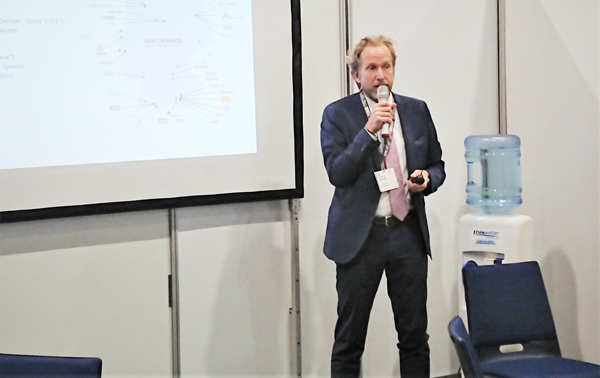
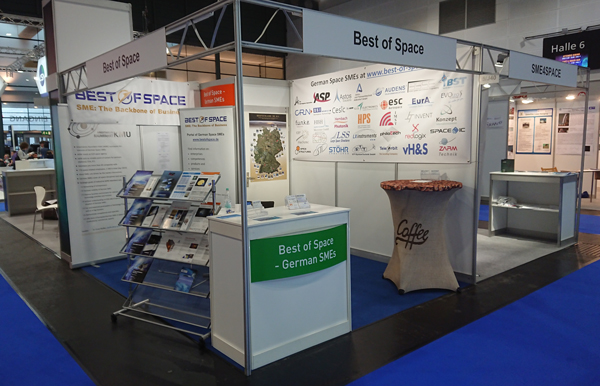
Einige Zahlen mögen dies einmal auf etwas ungewöhnliche Weise untermauern: 1,75 Kilo Mars, Twix und Gummibärchen, 4 Säcke Äpfel, Bananen und Mandarinen sowie 24 Liter alkoholfreie Getränke wurden in den drei Tagen allein hier „vernichtet“. Der Dank des Ausschusses für die wieder einmal reibungslose Organisation geht auch 2019 an Jens Janke, CRN Management GmbH, und für die finanzielle Absicherung der BoS-Präsenz an die AKRK-Unternehmen.

